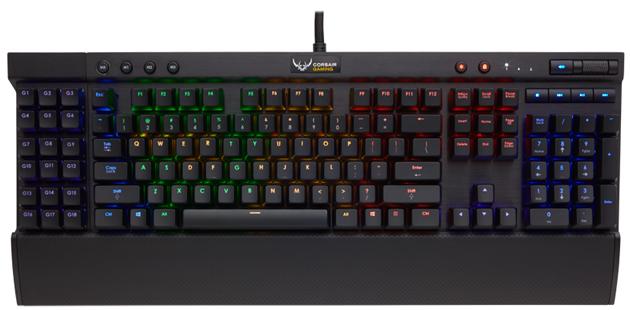Choosing the Best Mechanical Keyboard

This guide helps you pick the best mechanical keyboard for how you type and play. It skips hype and focuses on layout, switches, acoustics, and real usability. If you already know your size and switch type, jump to the comparison table and checklist.
I. Start With Your Use Case
- Work & writing: long sessions, comfort, low noise, reliable shortcuts.
- Gaming: fast response, stable key feel, anti-ghosting, low latency.
- Mixed: balanced layout with sensible function layers + media controls.
- Travel: compact size, good battery (if wireless), durable case.
II. Layout & Size
- Full size (100%): Best for spreadsheets and dedicated numpad usage.
- TKL (87/88-key): Drops numpad; keeps F-row and nav cluster; more mouse room.
- 75%: Tight layout with function row; compact but still versatile.
- 65%: Arrow keys + nav cluster on layers; great balance for many users.
- 60%: Pure compact; heavy use of layers for arrows/nav.
- Split/ergonomic: Comfort-first; steeper learning curve; excellent for strain reduction.
Pick the smallest layout that still supports your everyday shortcuts without friction.
III. Switches
- Linear: Smooth downstroke; popular for gaming and quiet office when paired with lube/dampening.
- Tactile: Small bump for feedback; popular for typing; wide range of bump strength.
- Clicky: Audible click; fun but loud; rarely office-friendly.
- Weight: Light (35-45 g) for speed; medium (45-55 g) all-round; heavier (60 g+) for deliberate typing.
- Hot-swap: Lets you change switches without soldering (check 3-pin/5-pin support).
IV. Sound & Feel
- Stabilizers: Good factory lube or tune later (rattle reduction for space/enter/backspace).
- Mounting: Gasket/top/tray mounts change sound and flex; gasket often sounds softer.
- Dampening: Plate/case foam reduces ping; switch films/lube refine feel.
V. Keycaps
- Material: PBT resists shine and feels textured; ABS can be smoother and brighter with shine-through.
- Legends: Doubleshot (durable), dye-sub (crisp on PBT); ensure good contrast.
- Profile: OEM/Cherry are common; uniform profiles (DSA) for consistent feel; personal preference rules.
VI. Connectivity & Latency
- Wired: Lowest latency and simplest.
- 2.4 GHz: Gaming-grade wireless with polling up to 1000 Hz+ on some models.
- Bluetooth: Convenient multi-device; higher latency than 2.4 GHz.
VII. Software & Remapping
- QMK/VIA: Onboard layers, macros, per-key remap without background apps.
- Vendor software: OK for lighting/macros; prefer offline and exportable profiles.
- OS-level: SharpKeys/Karabiner/PowerToys can fill gaps on non-programmable boards.
VIII. Build Quality
- Case: Aluminum/magnesium feel solid; plastic can be lighter and cheaper.
- Plate: Steel (stiff), aluminum (balanced), polycarbonate (softer); affects tone and flex.
- Cables & ports: Detachable USB-C preferred; avoid recessed or proprietary ports.
IX. Quick Comparison Table
| Use case | Layout | Switches | Connectivity | Notes |
|---|---|---|---|---|
| Office/Writing | TKL or 75% | Light linear or soft tactile | Wired or 2.4 GHz | Quiet caps/stabs; low-wobble feel |
| Gaming | 75%/65% for mouse room | Smooth linear (mid weight) | Wired or fast 2.4 GHz | Fast stabs; low latency |
| Mixed | 75% or TKL | Light tactile or linear | Wired/2.4 GHz; BT for travel | QMK/VIA or sane vendor software |
| Travel | 65%/60% (or split) | Medium-light switches | BT + 2.4 GHz hybrid | Detachable USB-C; sturdy case |
X. Buying Checklist
- Smallest layout that fits your shortcuts; arrows if you need them.
- Switch feel you enjoy (linear/tactile/clicky) and a weight you can sustain for hours.
- Hot-swap sockets if you want to experiment later.
- Stabilizers sound OK out of the box or are easy to tune.
- PBT caps or durable legends; clear legends if you use low light.
- Connectivity that matches your setup (wired vs fast 2.4 GHz; BT for multi-device).
- Remapping support (QMK/VIA or decent vendor software).
- Detachable USB-C, sane port placement, and a cable you like.
FAQs
Are clicky switches OK for office?
They are loud. If you share space, pick tactile/linear and dampening.
Do PBT keycaps always sound better?
Not always; they tend to be deeper and less shiny over time, but plate, case, and switches have bigger impact.
Is 2.4 GHz good for gaming?
Yes. Many 2.4 GHz boards feel indistinguishable from wired if the polling and firmware are solid.
Do I need QMK/VIA?
No, but it is the most flexible way to keep remaps without background software.
Conclusion
Choose layout first, then switch feel, then connectivity and software. A well-tuned TKL/75% with quiet linears or gentle tactiles suits most users; go smaller for travel or larger for dedicated numpad work. Hot-swap keeps your options open as preferences change.
